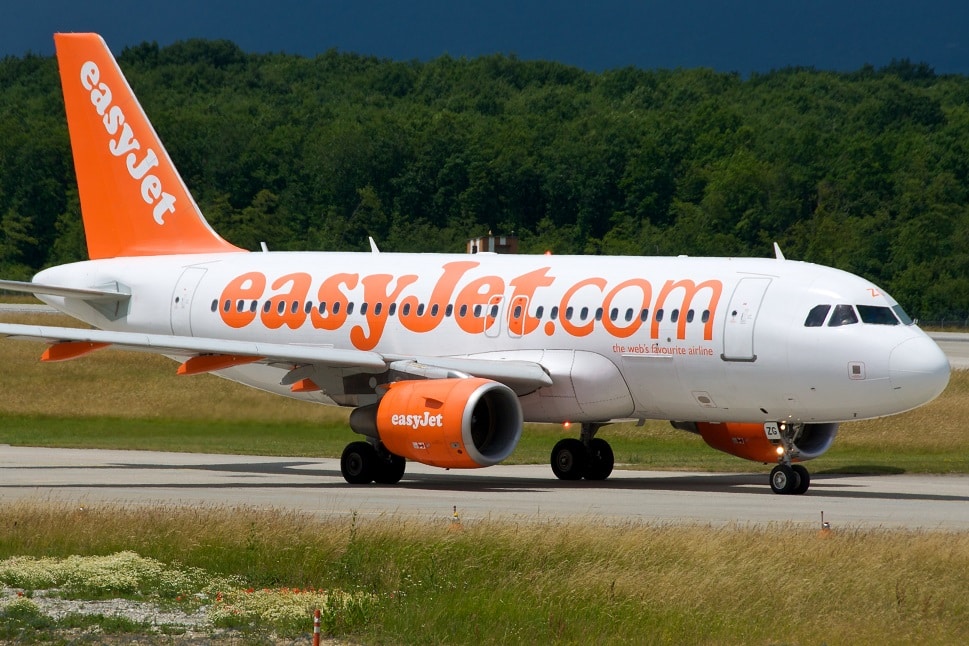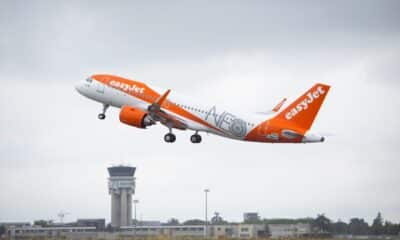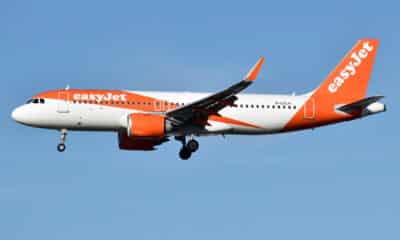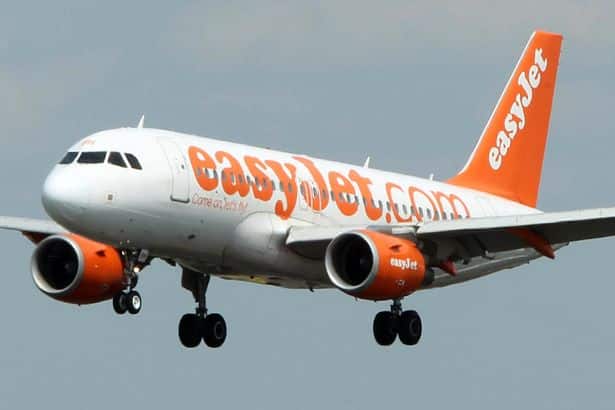Airlines
EasyJet launches new routes and holidays for summer 2023

EasyJet, Europe’s leading airline, has today announced it will be adding eleven new routes to its UK network for summer 2023, Packages from easyJet holidays are also available on all the new routes.
From nine airports across the UK, more than 200,000 extra seats are on sale today across flights on new routes to some of Europe’s most popular holiday destinations including the popular Greek islands Santorini and Chania, Corsica and Lisbon, as well as Antalya and Izmir in Turkey. Convenient city connections are also launching to Amsterdam from Southend, from Glasgow to Lisbon, and from Birmingham to Naples for the first time this summer, while a new service from Manchester to Paris Orly which will operate year-round.
Virgin Australia Launches First-Ever Cairns-Haneda Japan Service(Opens in a new browser tab)
The airline will also once again offer flights from London Gatwick to Ancona in Italy, with a twice weekly service operating on Mondays and Fridays, providing an even greater range of options for passengers travelling from the south of England, wishing to explore more of Italy’s charming Adriatic coast.
Flights are on sale from today on easyJet.com or via the app and customers can book early to take advantage of great value fares now available from just £22.99*. Package holidays are available from £209 per person, through easyJet holidays.
New easyJet routes now on sale:
- London Gatwick to Ancona flights will operate twice weekly on Mondays and Fridays from 26 June with fares from £28.99*
- London Gatwick to Calvi flights will operate twice a week on, Wednesdays and Sundays from 28 June with fares from £42.89*
- London Luton to Izmir flights will operate twice weekly on Mondays and Saturdays from 3 April with fares from £41.99*
- Southend to Amsterdam flights will operate twice weekly on Mondays and Saturdays from 24 May with fares from £22.99*
- Bristol to Chania flights will operate twice weekly on Tuesdays and Saturdays from 27 June with fares from £32.99*
- Birmingham to Naples flights will operate twice weekly on Wednesdays and Saturdays from 1 April with fares from £26.99*
- Manchester to Paris Orly flights will operate Mondays, Tuesdays, Wednesdays, Thursdays, and Fridays from 27 March with fares from £22.99*
- Edinburgh to Antalya flights will operate twice weekly on Wednesdays and Saturdays from 3 June fares from £39.99*
- Edinburgh to Santorini flights will operate on Tuesdays from 6 June fares from £39.99*
- Glasgow to Lisbon flights will operate twice weekly on Tuesdays and Saturdays from 2 June with fares from £39.99*
- Belfast to Antalya flights will operate twice weekly on Wednesdays and Sundays from 26 March with fares from £37.99*
Book with easyJet holidays (www.easyjet.com/en/holidays tel: 0330 365 5005):
- easyJet holidays offers seven nights at 5* Ramada Hotel and Suites by Wyndam Kusadasi in Izmir on an All Inclusive basis for £332 per person including 23kg of luggage per person, transfers and flights from Luton on 17 April 2023.
- easyJet holidays offers seven nights at 4* Paralia Diamond in Santorini on a Bed & Breakfast basis for £450 per person including 23kg of luggage per person, transfers and flights from Edinburgh on 7 June 2023.
- easyJet holidays offers seven nights at 4* Atlantica Caldera Bay in Chania on a Bed & Breakfast basis for £505 per person including 23kg of luggage per person, transfers and flights from Bristol on 4 July 2023.
- easyJet holidays offers three nights at 5* Grand Hotel Parker’s in Naples on a Bed & Breakfast basis for £330 per person including 23kg of luggage per person and flights from Birmingham on 2 August 2023.
- easyJet holidays offers three nights at 5* Dom Pedro Lisboa in Lisbon on a Room Only basis for £326 per person including 23kg of luggage per person and flights from Glasgow on 10 June 2023.
EasyJet serves 19 UK airports, offering over 476 routes to over 133 destinations from the UK to Europe, the Middle East and North Africa.

Airlines
A software error caused grounding the entire airline fleet

On Wednesday, the U.S. Federal Aviation Administration (FAA) issued a ground stop advisory for all Alaska Airlines and subcarrier flights due to a software issue, disrupting travel plans for passengers.
The FAA directive, which prohibited the departure of Alaska Airlines mainline and subcarrier flights, was implemented as a precautionary measure following the detection of the software problem. The ground stop was initiated after Alaska Airlines encountered difficulties during a system upgrade related to the calculation of weight and balance for their flights.
As a result, the airline opted for a temporary suspension of all its operations to address the issue and ensure passenger safety. Alaska Airlines promptly issued a statement acknowledging the incident and expressing their commitment to resolving the matter swiftly. “This morning we experienced an issue while performing an upgrade to the system that calculates our weight and balance.
Out of an abundance of caution, we requested a ground stop for all Alaska and Horizon flights, which was instituted at approximately 7:30 a.m. PT,” the statement read. Passengers affected by the disruption voiced their concerns on social media platforms, prompting Alaska Airlines to reassure them of their efforts to minimize the inconvenience and expedite the resumption of flights.
Following approximately an hour-long interruption, the FAA lifted the ground stop order, allowing Alaska Airlines and its subcarriers to resume normal operations. However, it was clarified that SkyWest, which provides regional service for Alaska Airlines and other carriers, was exempt from the ground stop and continued its flights unaffected.
Aerospace
Which is bigger 777x or 787 aircraft ?

The 777X is a new series of the Boeing 777 family and is designed to be larger and more efficient than its predecessor. It features two variants: the 777-8 and the 777-9, being the larger of the two.
The Boeing 777X emerges as the larger sibling within the Boeing family, representing a significant leap forward in both size and efficiency. Comprising two variants, the 777-8 and the 777-9, the latter takes the crown as the larger of the two. With its expansive fuselage and impressive wingspan, the 777X is tailored for long-range journeys and boasts a substantial passenger capacity.
On the other hand, the Boeing 787, affectionately known as the Dreamliner, occupies a niche in the market as a smaller yet formidable aircraft designed for medium to long-range flights. Its distinguishing feature lies in its composite fuselage, a technological marvel that renders it lighter and more fuel-efficient compared to conventional aluminum counterparts. The Boeing 777X is larger than the Boeing 787 aircraft.
When it comes to passenger capacity, the 777-9 reigns supreme, typically accommodating a sizeable contingent of 400-425 passengers in its standard configuration. In contrast, the 787, with its more modest dimensions, typically carries between 240-290 passengers, depending on the variant and layout.
One of the remarkable innovations introduced with the 777X is its folding wingtips, a feature designed to address the logistical challenges of accommodating such a large aircraft in conventional airport gates. These folding wingtips enable the 777X to retract its wings, allowing it to fit into gates designed for smaller aircraft while still reaping the benefits of an extended wingspan during flight, thereby enhancing fuel efficiency and operational flexibility
Airlines
Why Don’t Airplanes Fly Over the Pacific Ocean?

Flights do indeed fly over the Pacific Ocean, but the routes they take are often determined by factors such as airline policies, air traffic control decisions, and weather conditions. The Pacific Ocean is one of the largest bodies of water on Earth, and it’s regularly crossed by numerous flights traveling between North America, Asia, Australia, and other destinations.
However, some specific routes might avoid flying directly over certain parts of the Pacific Ocean for various reasons. For example:
- Safety and emergency considerations: While modern aircraft are equipped with advanced safety features, airlines, and pilots may prefer routes that keep them closer to potential diversion airports or within range of search and rescue facilities in case of emergencies.
- Air traffic control restrictions: Airspace management authorities may impose certain restrictions or preferred routes for managing air traffic efficiently. These restrictions could be based on factors such as military operations, airspace congestion, or diplomatic considerations.
- Weather conditions: Pilots and airlines consider weather patterns when planning routes. While the Pacific Ocean generally experiences fewer weather-related disruptions compared to other regions, factors like turbulence, thunderstorms, or tropical cyclones can influence route selection.
- Managing Cost Factors: In route planning, airlines have to take fuel prices, maintenance costs, crew charges, and other operating costs into account. Direct routes over the Pacific Ocean may be more cost-effective for shorter distances, but they may also necessitate extra safety precautions, including carrying more fuel for longer overwater operations.
- Remote Locations and Navigational Challenges: The Pacific Ocean’s vastness poses navigational issues, particularly for aircraft operating over isolated regions with few ground-based navigational aids. For precise positioning and route direction, pilots must mostly rely on satellite-based technology and onboard navigation systems, which may necessitate additional training and equipment purchases.
- Lack of Suitable Landing Options in the Pacific Ocean: Unlike regions with dense air traffic and numerous airports, the Pacific Ocean has vast stretches of open water with few suitable landing options in case of emergencies. While long-range aircraft are equipped with safety features like life rafts and emergency locator transmitters, the lack of nearby airports can increase the time it takes for rescue and recovery operations to reach distressed aircraft, posing additional risks to passengers and crew. Therefore, flight routes may be planned to ensure proximity to potential diversion airports or alternate landing sites in case of unforeseen circumstances.

























